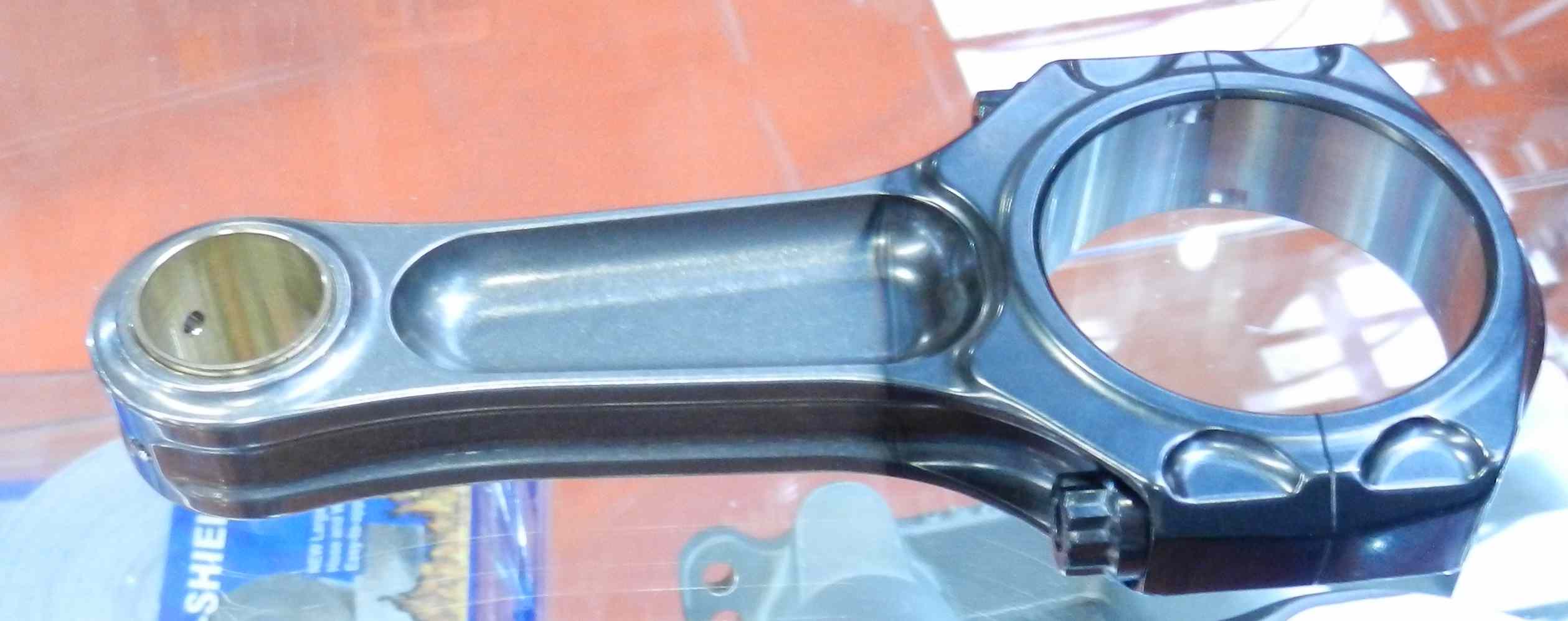Inverted bolts
While the ‘solid’ con rod – that is, one with no joint at the big end – is very attractive from an engineering point of view, it relies on the use of an assembled crankshaft, as in a crankshaft that is a multi-piece assembly. For this reason, their use is generally limited to engines with small numbers of cylinders, and they are especially common in single-cylinder engines. However, most engines are fitted with con rods that have a bolted joint at the big end. This makes the rod much more bulky than a single-piece rod. In many cases this extra bulk is a nuisance only in the amount of extra mass that this type of rod entails. There are cases though where the design of the split rod can affect the design of other components, and can fundamentally influence the engine installation, especially in the case of optimised single-seater car chassis.
The most common configuration of split con rods is to have the bolts inserted from the ‘bottom’ of the rod, with the bolt head pointing away from the small end. This can be a fundamental disadvantage for some bespoke race engines.
When we design a race engine, we want maximum performance from a small, light machine. It did not take man very long to realise that, in this respect, a vee engine is a good idea. Many purpose-designed race engines are vees, as are a number of engines in performance passenger cars, especially naturally aspirated ones. When we take a split con rod and plot its locus, when used in a vee engine it is quite often the head of the con rod bolt or nut that defines the lowest part of the locus volume. If we design the sump to maintain the smallest possible clearance to the rod locus, we can see that the bolt head defines the position of the crankshaft axis relative to the bottom of the engine.
In trying to minimise the centre-of-gravity height of the engine, the crankshaft should be as close to the bottom of the engine as possible. In a single-seater chassis, the engine is mounted as low as possible, so the rod locus affects how low the engine can be installed in the chassis. The FIA imposed a minimum dimension for Formula One engines some years ago for the crankshaft height, and also imposed a limit on centre-of-gravity height in order to prevent costly development of ever-smaller engines.
Also sometimes a concern in very compact vee engines is the fact that the rod bolt on the rod attached to a piston on the left-hand bank of the engine can come close to the cylinder liner on the opposite bank of the engine (and vice versa).
Both of these problems can be solved in part by using rods with ‘inverted’ bolts – that is, where the fasteners are inserted so that the bolt heads are closest to the small end of the rod. Such rods, if well designed, have a smaller rod locus than their more conventional brethren and so allow us scope to design an engine with a smaller crankshaft axis height. A rod fitted with inverted bolts has a disadvantage though in that the bolts can be awkward to fit and tighten, but this may be a small price to pay for an improved engine installation.

Fig. 1 - A racing con rod with ‘inverted’ bolts may allow the engine designer to lower the centre-of-gravity height of the engine
Written by Wayne Ward